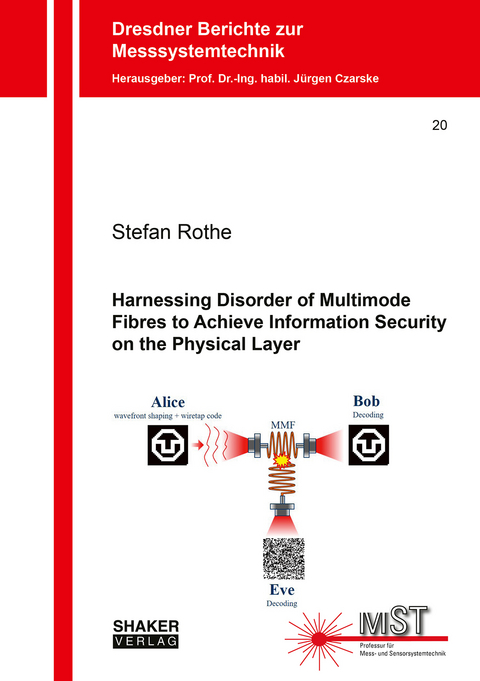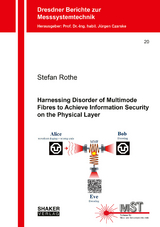Harnessing Disorder of Multimode Fibres to Achieve Information Security on the Physical Layer
Seiten
Digital communication has changed life considerably in a short time and has an impact on all domains . As a result , the risk of novel cyber attacks is increasing rapidly and requires new methods to ensure information security . In particular , optical communication networks have become a crucial environment , because they represent the backbone of the global digital infrastructure . Multimode fibres are a promising link type in this context , as its spatial paths can enhance network capacities significantly . This dissertation investigates an approach to achieve information-theoretic secure data exchange in optical multimode fibres by utilising physical effects in the fibre channel . The objective is for a transmitter ( Alice ) to exploit inherent disorder in multimode fibre to offer a legitimate message receiver ( Bob ) a decisive advantage over an eavesdropper ( Eve ). The clue relies on both modal crosstalk as well as mode-dependent loss that lead to an imbalance among distributed receivers on the fibre channel . Consequently , equalisation between Alice and Bob necessarily does not apply to Eve . This technique is called physical layer security and is experimentally implemented on a multimode fibre for the first time . By measuring the optical transmission matrix , Alice and Bob can characterise their channel for calibration and identify suitable spatial paths . For this purpose , both holographic methods and smart techniques based on neural networks are investigated and compared . By using the tranmsission matrix , Alice and Bob can determine an optical pre-distortion for controlling light propagation through the fibre and exchange information . In turn , Eve must process her channel mathematically . This asymmetry can provide benefit by implementation of sophisticated transmission strategies . Therefore , an attacking experiment was carried out in which Bob and Eve share 50 % each of the transmitted power of a 55-mode fibre . It is shown that through implementation of special channel coding an information-theoretic secure data exchange can be achieved in which 2 bit can be securely transmitted per channel use , although Eve has complete channel state information . Prospectively , the achievable information security could be further enhanced by investigating effects on induced mode mixing or time-varying transmission properties in the fibre channel . D-shaped fibres or external mechanical influences such as bending or twisting can introduce mode mixing or time variance . The results obtained in this dissertation demonstrate the experimental feasibility of physical layer security on a multimode fibre channel for the first time and provide a complement for secure data transmission in optical communication networks of future infrastructures that use spatial information paths.
| Erscheinungsdatum | 28.06.2023 |
|---|---|
| Reihe/Serie | Dresdner Berichte zur Messsystemtechnik ; 20 |
| Verlagsort | Düren |
| Sprache | englisch |
| Maße | 64148 x 210 mm |
| Gewicht | 257 g |
| Themenwelt | Sachbuch/Ratgeber ► Natur / Technik ► Technik |
| Technik ► Maschinenbau | |
| Schlagworte | Communication channel • Crosstalk • digital holography • Information Security • mode-dependent loss • multimode fibres • Neural networks • Physical Layer • Wavefront Shaping • wiretap codes |
| ISBN-10 | 3-8440-9123-8 / 3844091238 |
| ISBN-13 | 978-3-8440-9123-6 / 9783844091236 |
| Zustand | Neuware |
| Informationen gemäß Produktsicherheitsverordnung (GPSR) | |
| Haben Sie eine Frage zum Produkt? |
Mehr entdecken
aus dem Bereich
aus dem Bereich
die wichtigsten Begriffe, Bautypen und Bauelemente
Buch | Softcover (2024)
Prestel (Verlag)
32,00 €
Buch | Hardcover (2021)
C. Bertelsmann (Verlag)
18,00 €
vom Kolosseum über die Akropolis bis zur Alhambra
Buch | Hardcover (2023)
DK (Verlag)
19,95 €




